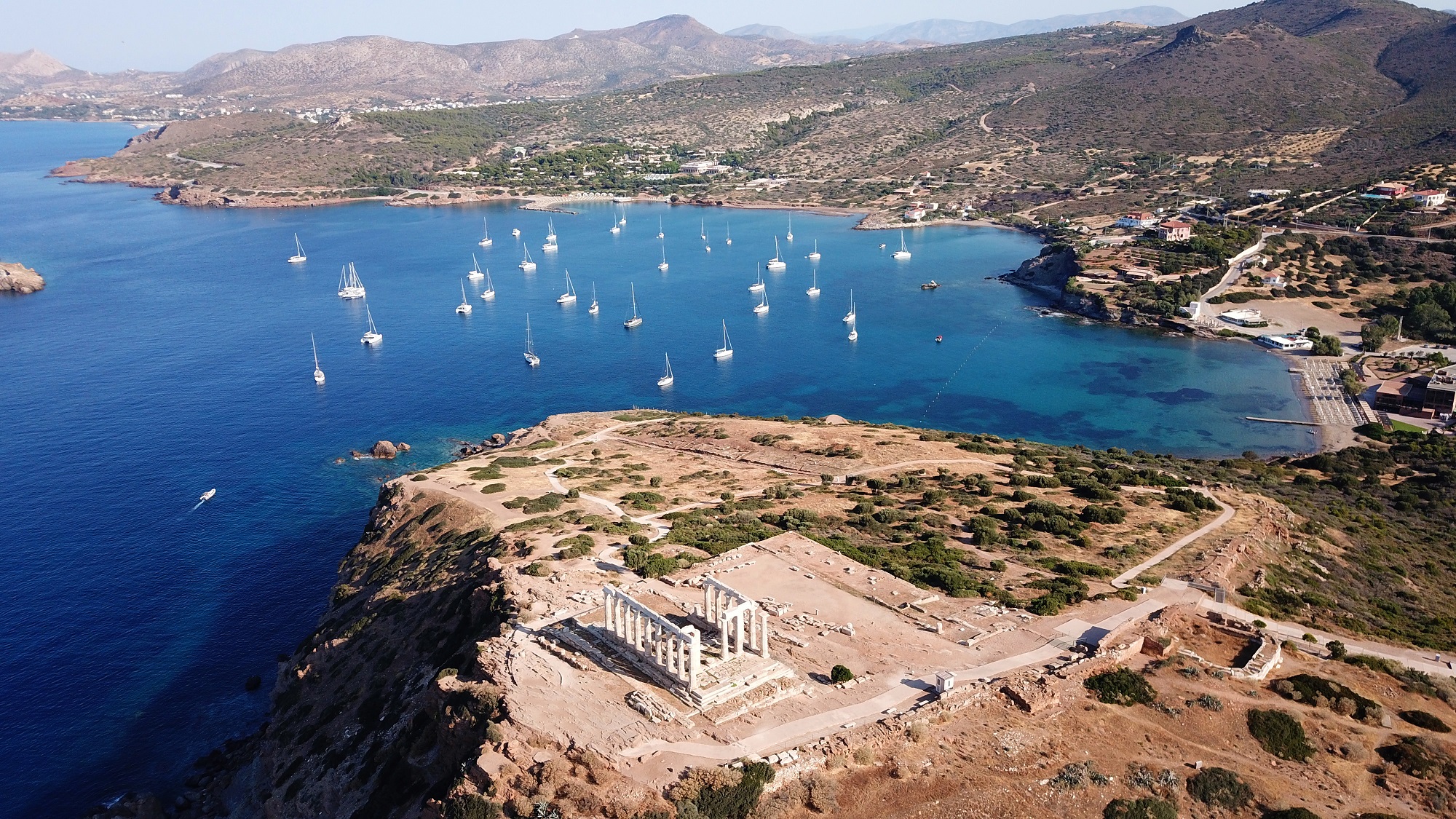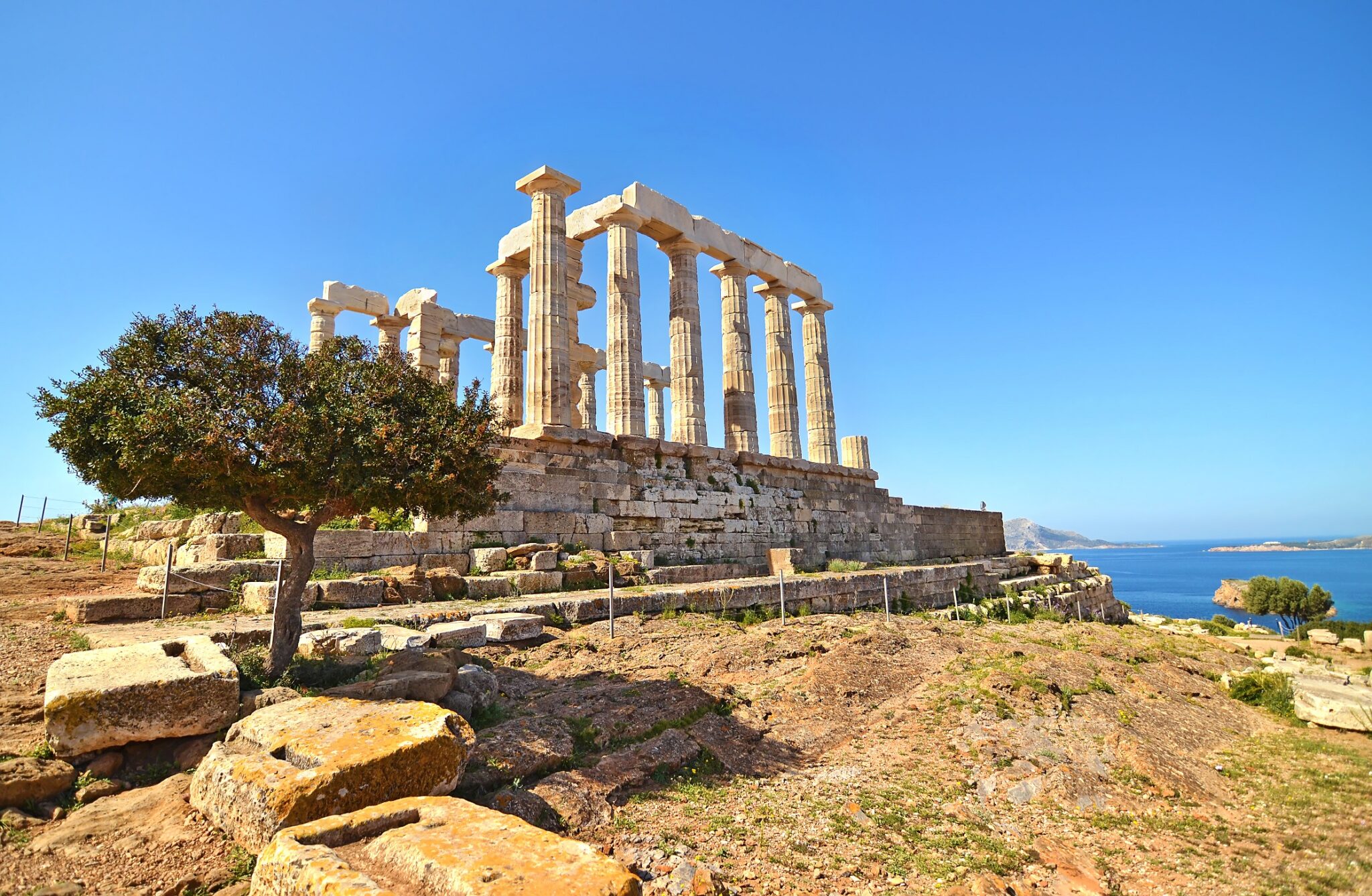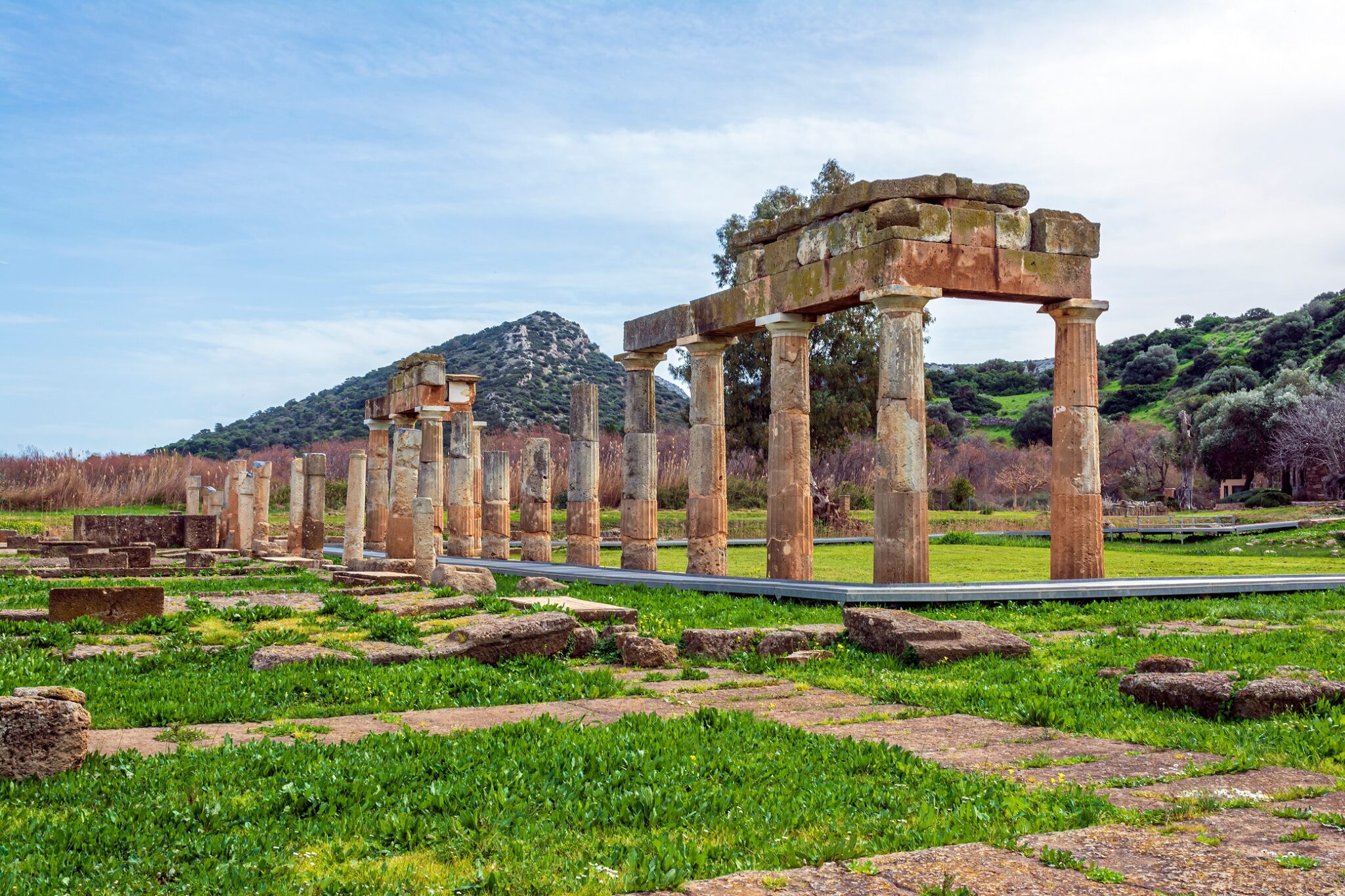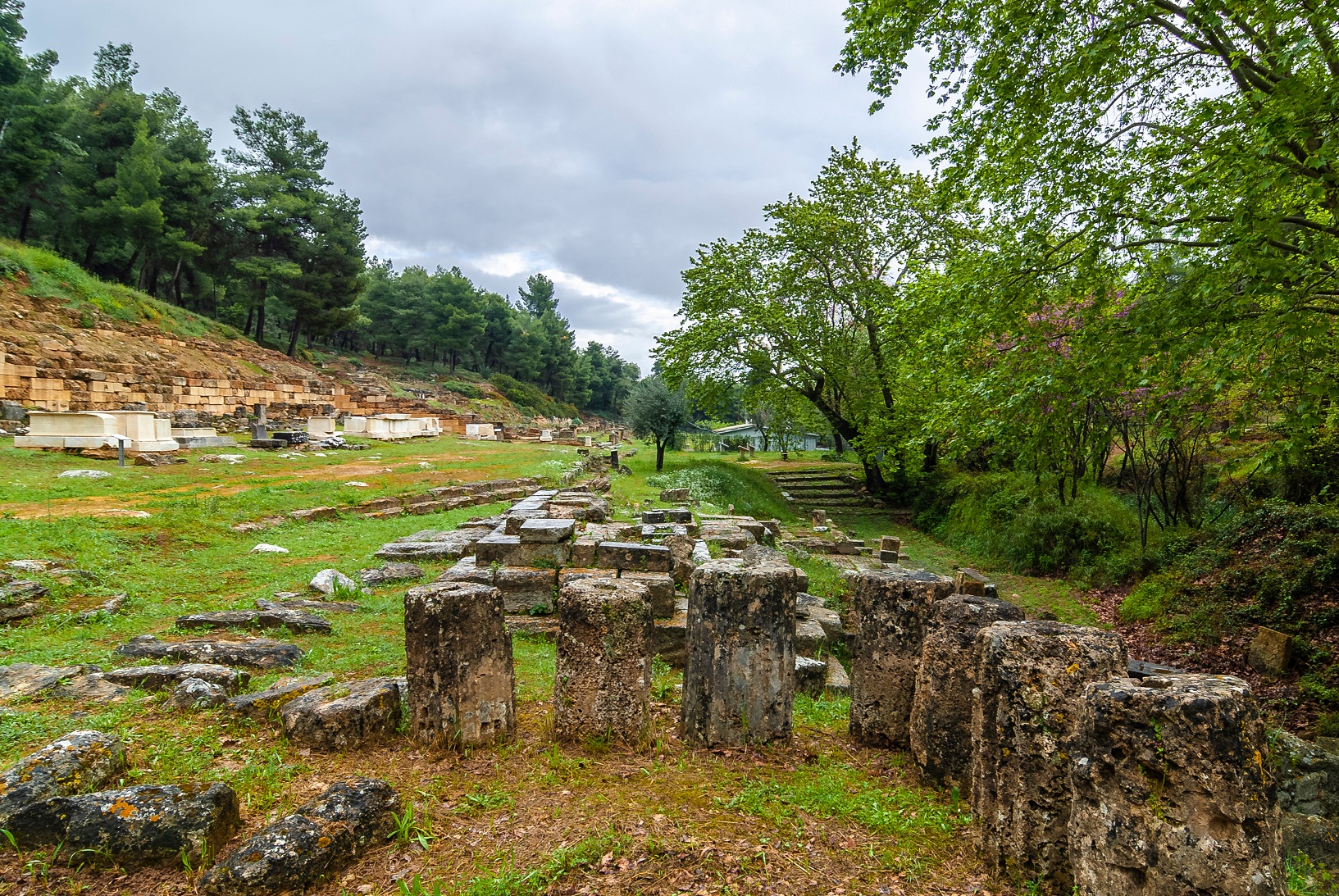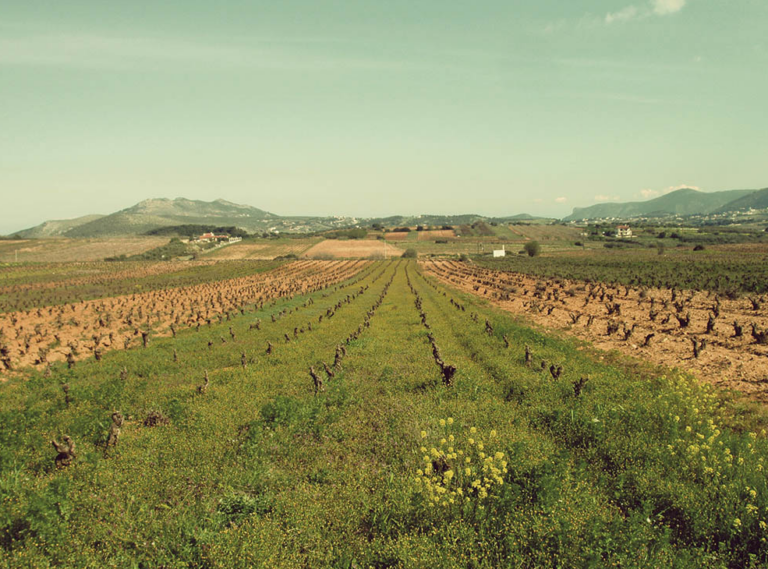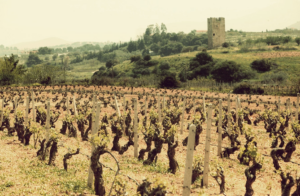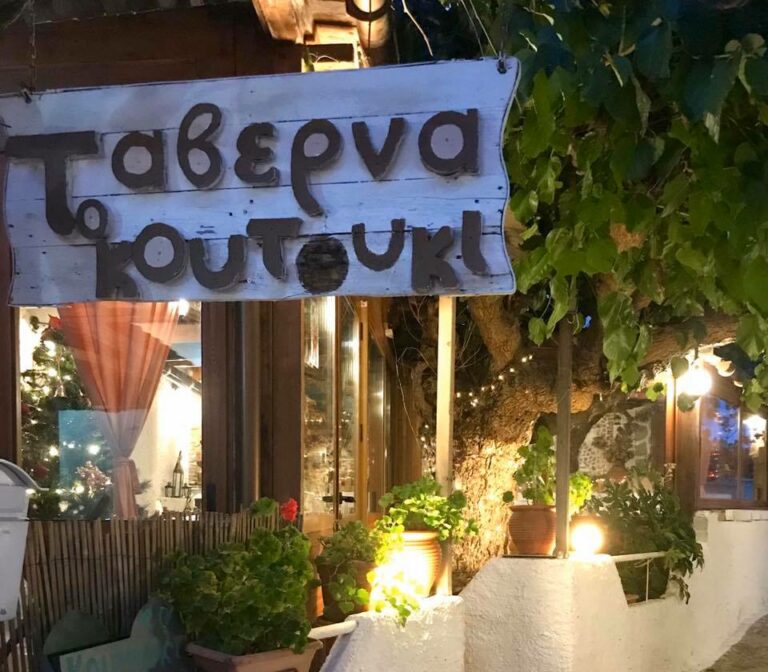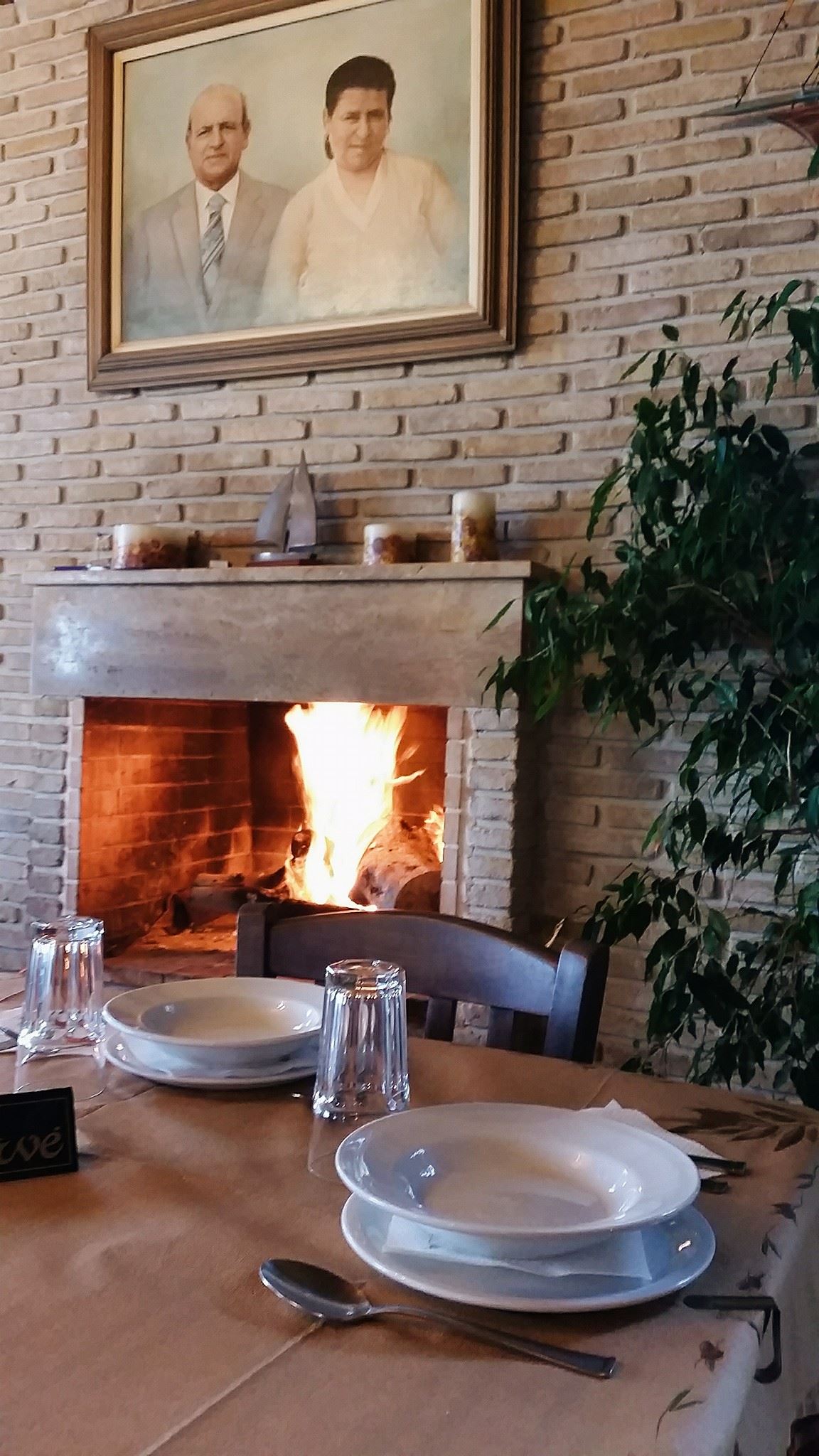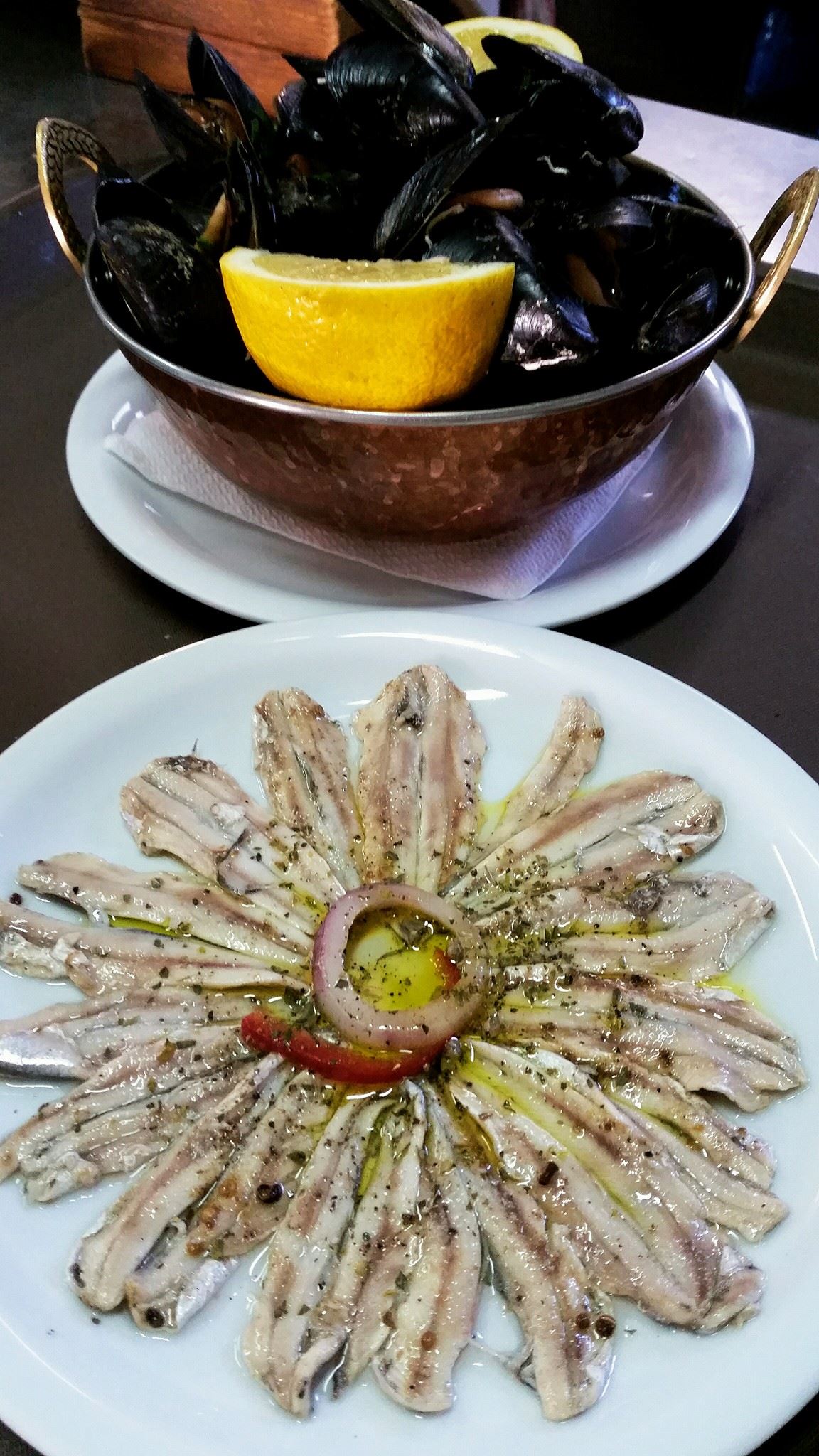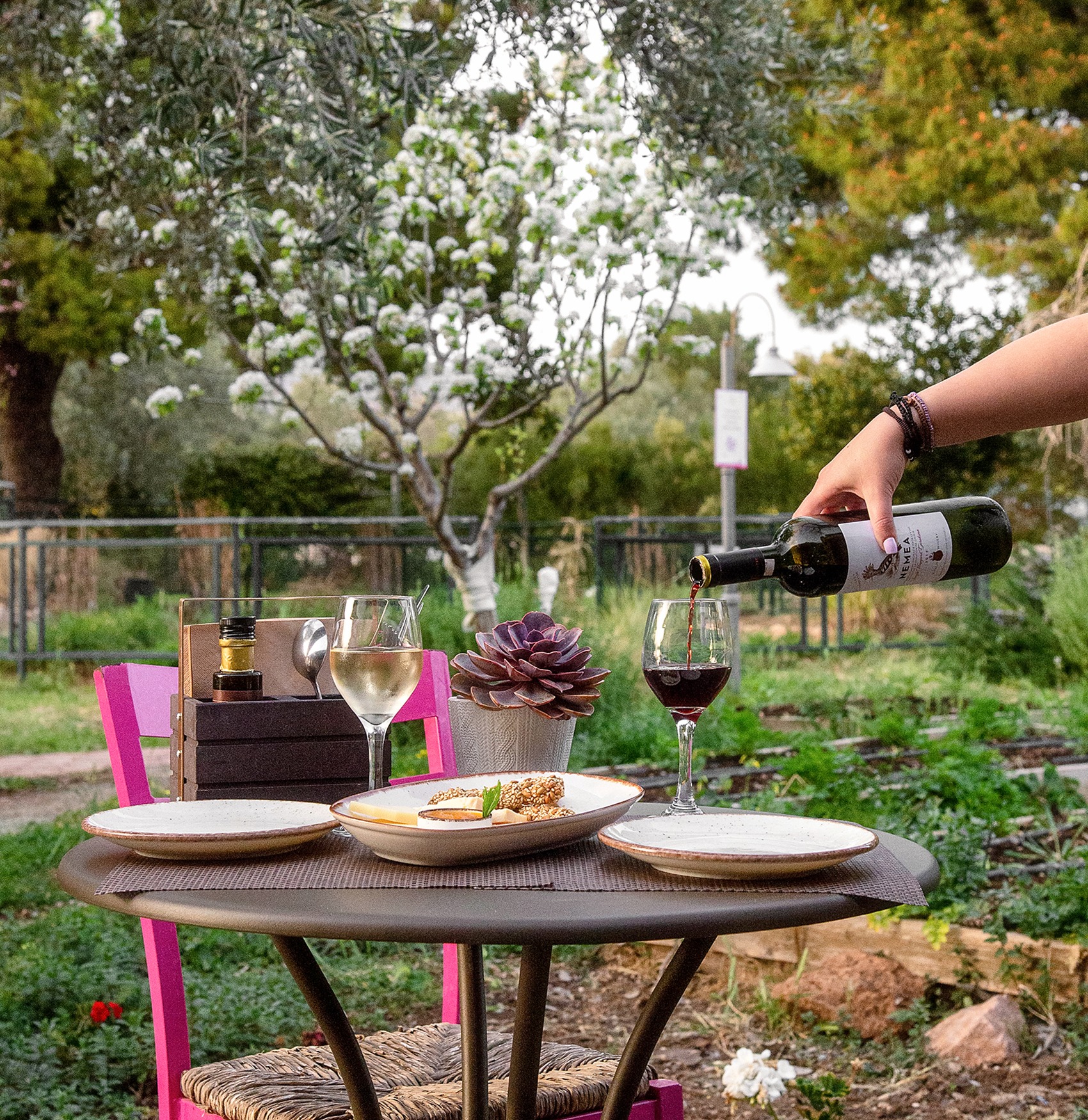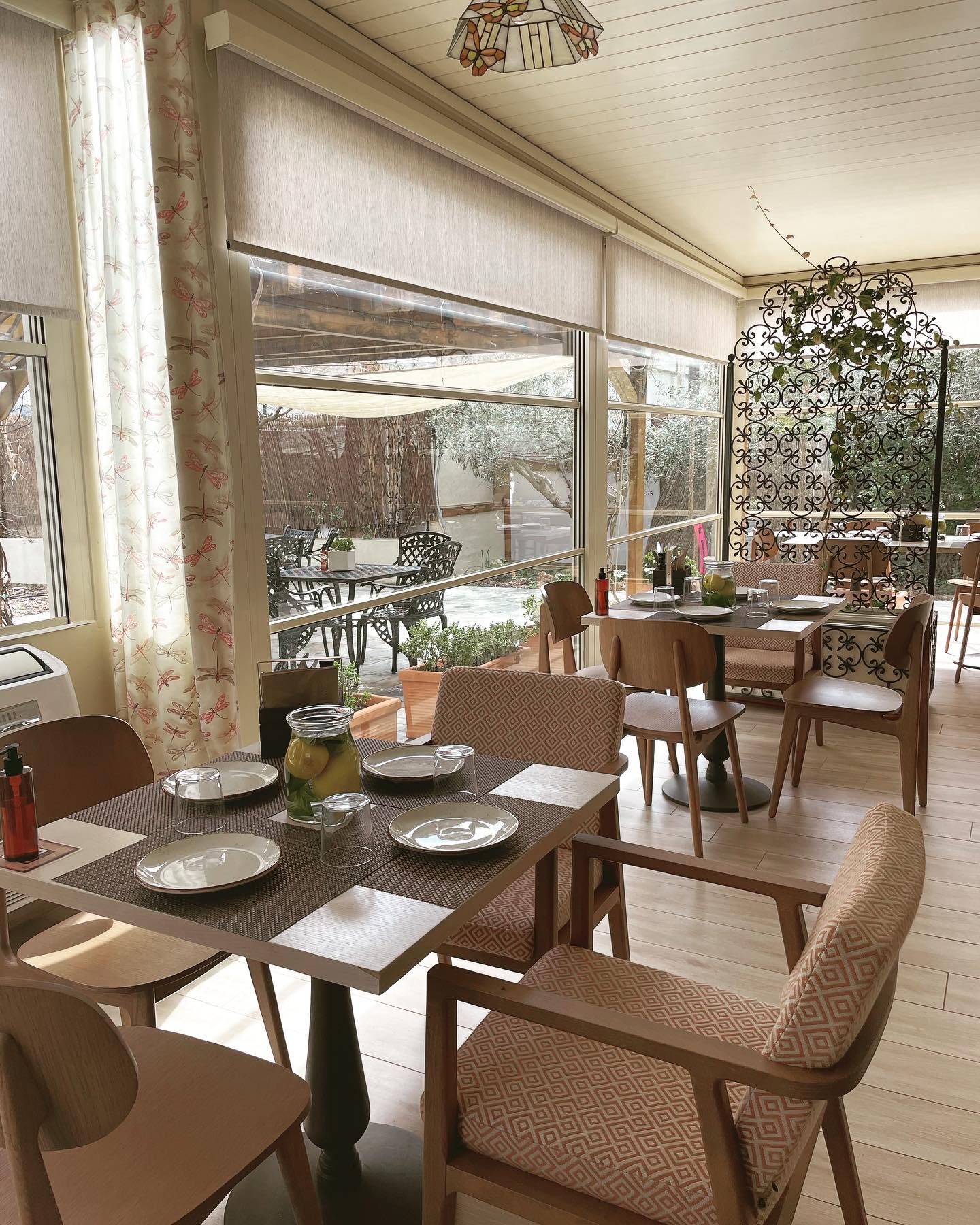The huge area of East Attica* has everything and is not quite mainstream yet. Local nature includes endless sandy beaches, verdant national parks, thousands of square metres of vineyards. The presence of ancient history is everywhere with marble monuments of international cultural importance. And the food and wine at the small local taverns and wineries open to visitors complete the experience at this part of Attica.
Archaeological sites
The temple of Poseidon in Sounio
The temple of Poseidon in cape Sounio, the south-eastern edge of Attica holds a special place in our heart. When we travel by boat and see its Doric columns in the distance, we know our journey has come to an end and that very soon we’ll have reached Piraeus.
The temple was built in the 5th century, the same time as the Parthenon, during the Golden Age of Pericles, over the ruins of an archaic temple, to honour Poseidon, using local Agrileza marble.
The setting is gorgeous since the rock the temple stands on is almost vertical to the sea, at 73 m height, and at its foothill, two small bays are formed, separated by an isthmus. From the temple, the view of the Saronic Gulf is incredible. When the weather is good, you can see the islands of Kea, Kythnos, Serifos and Aegina in the horizon. The sunsets at the temple are magical and when there’s a full moon, you’re filled with awe. In the summer, swimming in the clear waters of the nearest beach, with the imposing ancient temple in the background, is a unique experience. Apart from the archaeological site, the Sounio national park is located here (established in the ‘70s), the smallest national park in Greece. “Chaos”, a small, almost circular chasm, 55m deep with 120 m diameter is very impressive and kind of scary.
According to mythology, Aegeus, the mythical king of Athens, was in Sounio when he saw the black sails on the ship that was bringing back his son Theseus, who had travelled to Crete to kill the terrible Minotaur. Carried away by Theseus’ victory, the crew forgot to change the sails to white, which would show that Aegeus’ son was returning home alive. So, the king, in despair, fell off the rocks and killed himself. The sea was named after him, Aegean Sea.
Nearby, you’ll also see Lord Byron’s signature (he’s written a poem about the area) who, like many foreign travellers, had been enchanted by the atmosphere of this place.
Temple of Artemis at the archaeological site of Brauron
One of the largest and greatest temples of antiquity, the temple of Artemis Brauronia, is located near the seaside municipality of Artemida (Loutsa), in a calm, peaceful location that you need to look for in order to see. River Erasinus almost encircles the temple, creating a wetland with lush vegetation that is in danger of destruction, as they are planning to cut the vegetation and build a dam to stop the river. At the moment, you’ll see frogs, tortoises, and (harmless) water snakes in its waters, and there are trails around it, ideal for walking or cycling, that lead to the sea. The landscape suits the goddess perfectly, since she reigned places that were free from human intervention: wild forests, inaccessible riverbanks, marshes.
The small Doric temple of Artemis, that was built in the location of an older temple in the early 5th century BC, dominates the archaeological site. Iphigenia, who was destined to be sacrificed to appease Artemis, and was rescued, in the last moment, by the goddess and carried to Tauris, was also worshipped here.
The very interesting Brauron Archaeological Museum is just 200 m from the archaeological site, and it showcases almost the entire history of Mesogeia, starting from the late Neolithic period. The votive offerings that were discovered at the excavations, show that Artemis was worshiped as the goddess of nature, protector of children, marriage, childbirth and, in general, of important moments in a woman’s life. There is a trail that starts at the museum and leads to the wetland nearby, equipped with a special guidance system for the visually impaired. Every five years, the Brauronia were celebrated with a majestic procession starting from the Acropolis in Athens (where a temple dedicated to Brauronia Artemis was located) until the temple in Brauron. In Brauron, they also held the Arkteia festival.
The parents would bring their prepubescent girls, aged between 7-10 years, to the temple, where they would stay for a year serving as arktoi, she-bears (the bear was one of the goddess’ sacred animals), participating in rituals, wearing saffron coloured robes. When the girls reached puberty, they would stay for 8-10 days at the temple.
Amphiareio, Oropos
Very few know about – and even less visit – Amphiareio in Oropos. It’s one of the twelve Amphiareia sanctuaries of antiquity, dedicated to Amphiaraus. He was a charming persona who took part in the Argonauts’ expedition to Colchis, participated in the Calydonian boar hunt, and was compelled to go on the Seven against Thebes expedition, even though he had foreseen its terrible ending. Zeus rescued him at the last moment, opening a chasm into which Amphiaraus fell along with his horse carriage, becoming a god.
He was a seer and a healer, and was worshiped like Asclepius, while patients went to his Amphiareia sanctuaries in hopes of being cured.
To reach the Amphiareio in Oropos, in the small Mavrodilesi valley, at the banks of the now dry river Haradra, you cross a lovely verdant forest. The archaeological site is lush and spacious, serene with a sacredness in the atmosphere. It develops in tiers, and if you walk around, you’ll be able to see the god’s Doric temple (4th century BC), the big altar near the sacred spring and the basins underneath the large plane trees.
About 25 inscripted statue pedestals remain in the site that used to hold votive statues of heroes, priests, of Ptolemy IV, pharaoh of Egypt, and of other benefactors of the temple.
Climbing up a few steps you’ll reach the theatre with the restored columns that stood in front of the stage. There are five marble thrones, dating to the 1st century BC, located there. In addition, there were rooms where the patients slept waiting for Amphiaraus to appear in their dreams and cure them or advise them on their cure. At the end of the columns, there’s a square building that may have been a bath.
Wineries open to the public
Kokotos Estate
The estate’s history starts in the mid-70s. At the then deserted area of Stamata, in the middle of nowhere, on a hill, Giorgos Kokotos decided to give up city life and build his house there and work on the land, making wine, along with his main profession as an engineer.
Today, the family-run Kokotos winery, at the highest spot of the Estate, with a panoramic view of mounts Penteli and Parnitha and of Evia island, welcomes wine-lovers from all over the world. The Estate’s certified organic wines mature in French barrels in the air-conditioned underground cellar. The Estate regularly organises wine tastings at the designated area, among the vines, with a view of the mountains Penteli and Parnitha. You’ll enjoy wine tasting around monastery tables, by the fireplace when it’s cold, together with the right dishes to complete the tasting experience. The first Sunday of each month, they organise a tour of the vineyards and winery, while they also organise educational activities in nature for children, depending on the season, like grape harvesting and olive picking.
In the beginning of November, they organise a charity bazaar for Agios Georgios Methistis, the estate’s chapel saint.
Stamata, tel.: 0030 2108145113, daily apart from bank holidays, 12.00 -17.00, by appointment, tel.: 0030 6946 068010, https://kokotosestate.gr/)
Papagiannakos Domaine
This is the first winery especially designed and built in Greece according to innovative bioclimatic standards, in the heart of the Attic vineyard in Markopoulo, next to one of the most beautiful beaches of Mesogeia and the archaeological site of Brauron.
The winemaking, bottling, aging and storing spaces are located in the building’s basement. The wine tasting area is between the basement and the ground floor, allowing guests to look at the aging cellar with the barrels, as well as at the vineyard. On the ground floor, you’ll find the display area and the shop, as well as the reception area, while the outdoors space is available for summer events.
You can watch the production process, visit the aging cellar, try the Domaine’s wines, and buy them from the shop.
In addition, you can book an appointment for special tours of the winery and cellar, together with wine tasting of all the winery’s labels.
Markopoulo, Mesogeia, Pousi / Kalogeri, tel.: 0030 22990.25206
Monday to Saturday 8.30-16.00, Sunday by appointment, https://www.papagiannakos.gr/
D’ Artemis Distillery
Its history starts in 1892, when in the heart of Athens’ old trading centre, on 25 Evripidou str, Othonas Panagiotakis opened a small shop selling ouzo. With the passage of time the shop turned into a famous distillery due to its wonderful ouzo and unique liqueurs. In 1977, the historic distillery passed into the hands of Vlasis Filippopoulos along with all its secrets and the production techniques.
Today, the distillery has created a new D’ Artemis product line: Ouzo Black, Ouzo Blue, 15 different flavours of liqueurs, Raisin Brandy (made with black Corinthian raisins), Mastic, Kerasma (composed of 15 different extracts, based on Othonas Panagiotakis’ FRUMEL recipe). Everything is 100% natural, distilled or extracted from carefully selected ingredients, with a limited production. Pallini, 251 Marathonos ave, tel.: 0030 2106030172-3 http://www.dartemis.gr
Food
To Koutouki
This family-run tavern is almost hidden away in an alley. When the weather is good, the tables are set in the garden, under the trees, creating the feeling of being on an island. The main attraction is the meat (pork steak, lamb chops, beef patties, sausage) plus the typical salads and appetizers –salads, fries, boiled greens, and a quite good cheese pie. Stamata, 13 25th Martiou str, tel.: 0030 21 0621 8108)
Marida
Only a few kilometres away from the Temple of Poseidon, this historic family run fish tavern has been around since 1930, setting tables in its cheerful garden with the romantic sea view. Fresh fish that come from boats and caiques from Lavrio and which you can choose in the fridge, and typical fish meze, their specialties include the fried picarel (marida means picarel), as well as the shrimp saganaki (prepared in a small pan with tomato sauce) and squid in its ink. If you’re lucky and the owner Antonis Zagouris, the third generation running the business, isn’t too busy, you’ll hear great stories about the local history. Legrena, 64,5 km on the Athens-Sounio road, tel. 0030 2292 051221
“I Kantina tou Gianni – Stis Elies”
It’s as typical a food-truck as it gets, with a small makeshift garden with gravel and flowerpots and trees around it. In front of the truck, that’s facing the street, there’s a grill. This very simple place is paradise for the mutton meat aficionados – mutton filet, juicy and well prepared with no smell – and an alternative spot for great meat dishes. Those who don’t like mutton can have charcoal grilled kebab, pork and chicken souvlaki, beef patty, pork steak, beef steak, and liver. Spata, 24 Agiou Thoma str, tel.: 0030 6983387046
To Perivoli in Vari
“To Perivoli” is a farm-to-fork restaurant inside a real orchard (perivoli means orchard), that grows the food it offers its customers. At the same time, they organise various activities, like wine tasting, tours, gatherings etc. Whatever doesn’t come from Perivoli itself is sourced from producers that respect nature, seasonality and local tradition. Apart from having a nice meal at the restaurant, you can buy products and learn how to cook using old recipes. If you book in advance, you can also bring your olives, no matter how few, and get your own olive oil, on the same day, produced at Perivoli’s small cold press mill. Entrance is allowed only to people over the age of 11. Vari, 15 Kirinias steet (Kirgia square) tel.: 0030 2108963000 https://www.perivolivari.gr/
*East Attica Areas: Oropos (Oropos, Avlona, Kalamos, Sikaminos, Polidendri, Markopoulo Oropou, Malakasa, Kapandriti, Afidnes), Marathonas (Marathonas, Nea Makri, Gramatiko, Varnavas), Rafina – Pikermi, Dionisos (Agios Stefanos, Drosia, Dionisos, Anixi, Stamata, Krioneri Rodopolis), Acharnes (Acharnes, Thrakomakedones), Pallini (Pallini, Gerakas, Anthousa), Peania (Peania, Glika Nera), Spata-Artemida, Lavreotiki (Lavreotiki, Keratea, Agios Konstantinos) Saronikos (Kalivia Thorikou, Anavisos, Saronida, Kouvaras, Palea Fokea), Vari-Voula-Vouliagmneni, Kropia, Markopoulo-Mesogeia.
Read also:
Ramnous and Brauron: Two archaeological gems on the coast of Attica
Ancient Agora – Pnyx – Kerameikos: Three archaeological sites combining walking with history
The wines of Greece – Rethymno: The climate, the wineries, the varieties, the labels



